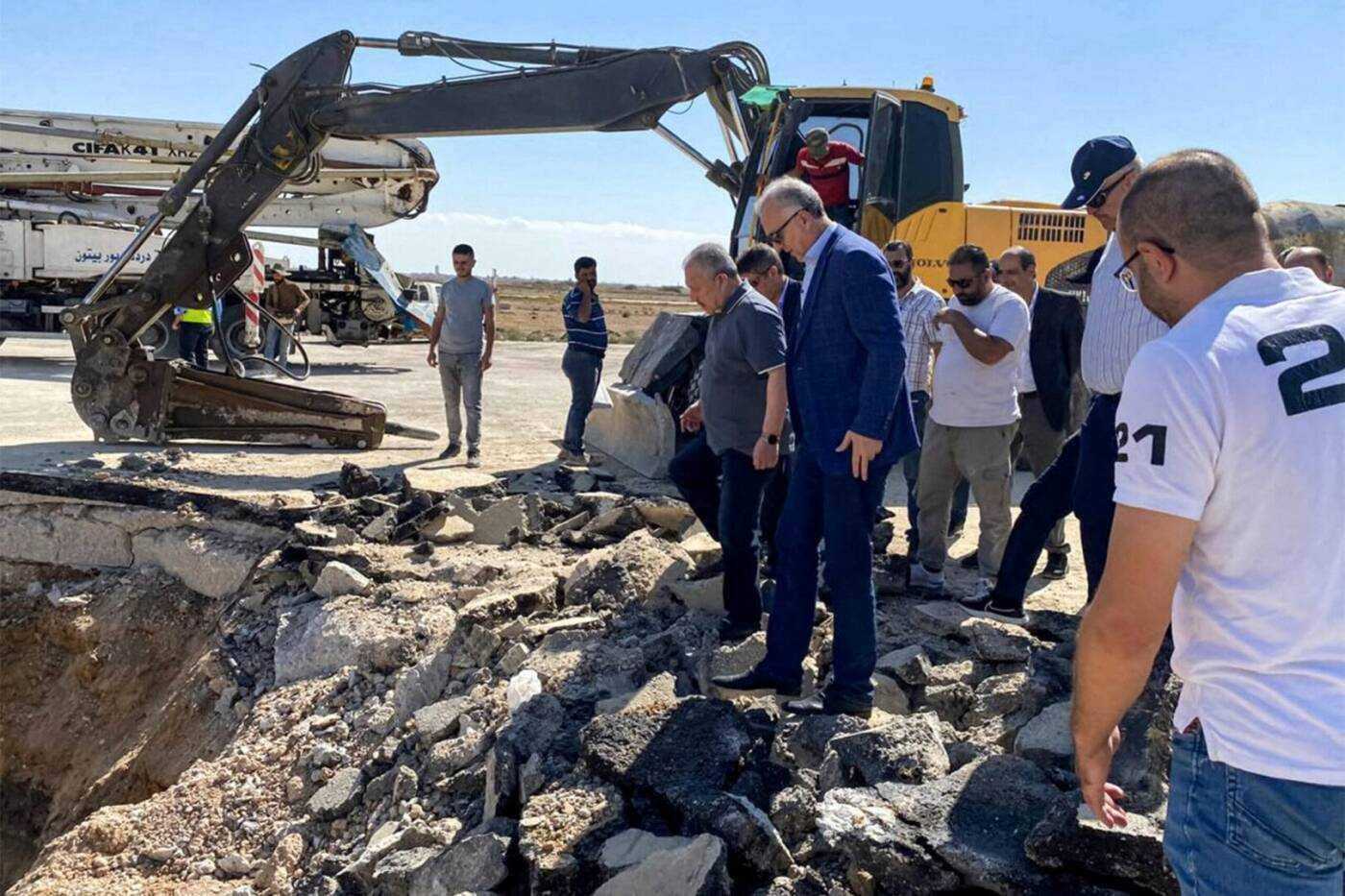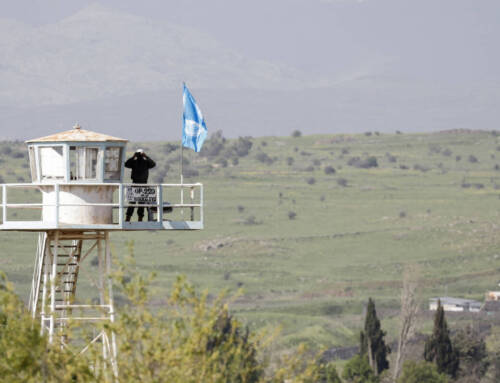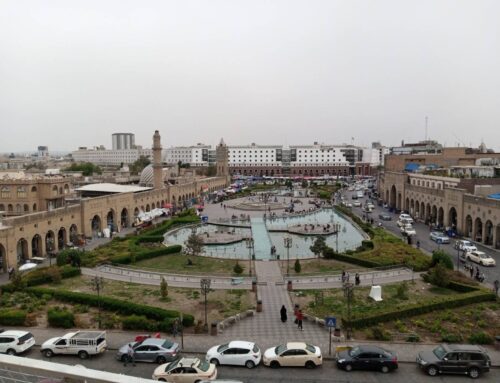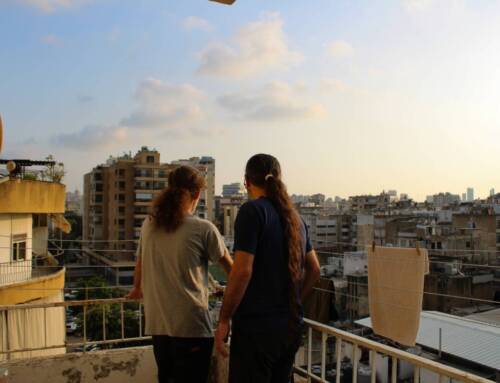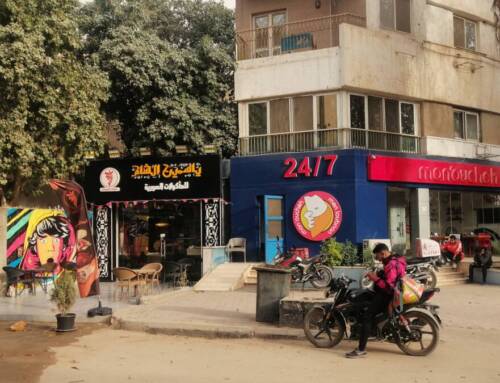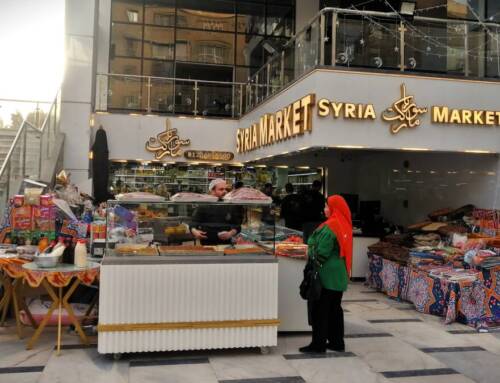Israel strikes and Iran mobilizes: Is further escalation likely in Syria?
Syria’s fronts with Israel remain relatively quiet, while intensified Israeli strikes and mobilization by Iran-linked forces in the country leave the door open to increased escalation.
7 November 2023
PARIS — As Israeli operations against the Gaza Strip enter their second month amid the mass killing and displacement of Palestinians, Syria’s front with Israel remains relatively calm, despite the latter targeting several positions of the regime and affiliated militias in Syrian territory.
For decades, Damascus has claimed to lead the “axis of resistance,” an informal alliance of state and non-state actors opposed to Israel that includes Iran, Syria, Hezbollah and Palestinian factions, among others. Accordingly, it vowed to respond—or reserved the right to respond—to any Israeli attack, something that has not happened despite years of regular Israeli bombardment of Syrian territory.
During the current war in Gaza—launched in response to Hamas’ October 7 attack on Israel—Tel Aviv has bombed the Damascus and Aleppo airports, as well as military positions in Syria’s southern Daraa and Quneitra provinces near the border with the occupied Golan Heights. The same period has seen a minor escalation of tensions at Syria’s southern border, with limited shelling of Israeli-occupied territory.
Still, as the war continues, the possibility of increased escalation remains. Notably, Iranian forces in Syria, alongside the regime and Lebanese Hezbollah, continue to transport weapons and mobilize their forces.
Israeli Strikes in Syria Since Hamas’ Operation al-Aqsa Flood
(October 7, 2023-November 7, 2023)
Data compiled by Syria Direct shows that, from October 7—the day Hamas’ al-Qassam Brigades launched their Operation al-Aqsa Flood—to November 7, Israeli forces conducted 14 strikes on targets in Syria.
Israeli warplanes targeted the Aleppo International Airport four times, and the Damascus International Airport two times, in what three experts Syria Direct spoke to described as an attempt to “disrupt arms transfers from Iran to Syria.” Both airports’ runways were damaged, putting them temporarily out of service.
Southern Syria, meanwhile, saw seven Israeli bombardments against regime military positions. The Israeli military said the strikes were in response to launches from Syrian territory into Israeli-occupied territory.
Targets in Syria’s southern Daraa province included a tank company near the village of al-Sheikh Saad, Tal Jamua, the 12th Armored Brigade, a radar battalion and farms in the area of the town of Tseel and Wadi Jamla. In neighboring Quneitra, Nabaa al-Fawar military camp and farms in the Wadi Saysoun area were also hit. These positions are believed to include a mixture of regime forces, Iranian militias and Hezbollah.
On October 10, three days after Hamas fighters broke out of the Gaza Strip and attacked nearby settlements, the Israeli army targeted military positions of regime forces and Iranian militias in Daraa and Quneitra in response to rocket-propelled grenades launched from these points towards the Golan Heights.
The same scenario was repeated on October 14, when Israeli artillery struck farms in Tseel and Sahm al-Jolan, in the western Daraa countryside, in response to rockets fired towards the Golan Heights. No group within Syria claimed responsibility for striking Israeli-held territory in either incident.
The limited exchange of fire indicates that “Israel’s bombing of Daraa is limited and defined, focused on the sources of fire,” one former opposition commander who lives in the western Daraa countryside told Syria Direct. He noted one exception, “a strike that targeted the 12th Brigade, which is believed to have hit a shipment of advanced weapons that reached the brigade, which is an important point for Iranian militias and Hezbollah.”
In that strike, late on the night of October 25, Israeli warplanes targeted the 12th Armored Brigade in the Daraa city of Izraa, as well as the nearby radar battalion. The strikes caused a series of explosions that killed 18 regime forces, Damascus said. The 12th Brigade includes several tank, infantry and air defense battalions, as well as several depots, some of which are advanced weapons depots.
But Israeli strikes have not stopped increasing Iranian militia activity in southern Syria, the former commander said. “We have detected increased Iranian militia activity in the Yarmouk Basin, Tal Jamua and other points in the western Daraa countryside and Quneitra,” he said, adding that Iranian forces move “under the cover of regime forces, in Syrian army uniforms.”
Why is Israel striking Syria?
Israel has struck targets within Syria for years, but the recent escalation of its bombardment coincides with the current war in Gaza and its fallout in the surrounding region. This includes “Iran’s intensification of air and ground transport operations, and its attempts to mobilize more and transfer weapons and ammunition to southern Syria,” strategic analyst and defected Syrian Colonel Mustafa al-Farhat told Syria Direct.
“This escalation is different from what preceded it,” al-Farhat explained. “Each party—Iran, Israel and [the United States of] America—is trying to highlight its negotiating positions, in the event of negotiations.”
Sam Heller, a researcher at Century International, agreed. Israeli strikes “could be warning messages addressed to Damascus, to discourage it from playing a more active role in the ongoing crisis,” he said.
However, “it is difficult to know the extent of these strikes’ impact, since the behavior of members of the axis [of resistance] is secret,” Heller added. Accordingly, “Israel’s claims, and the accuracy of its information, cannot be confirmed.” Tel Aviv’s strikes have also not stopped “the bombing of Israel from southern Syria and the targeting of American forces in eastern Syria.”
Israel faces the risk of major escalation with Lebanon’s Hezbollah, so “Syria’s role as a logistics conduit is taking on a new urgency for both sides, and I think that’s why we are seeing an uptick in the number and frequency of attacks, such as with the repeated bombings of the airports in Aleppo and Damascus,” said Aron Lund, a researcher at the Swedish Defense Research Agency (FOI) and The Century Foundation.
Israeli attacks “are retaliatory, to make the point that Israel will respond harshly to rocket fire and attacks from or via Syrian territory. It’s mainly an attempt to deter Syrian involvement, at a time when Israel has plenty to deal with already,” Lund said.
However, Tel Aviv’s effort to stop arms shipments and support coming from Iran to Syria and Hezbollah is “a cat and mouse game, where both sides are constantly innovating and trying new ways to trick each other,” Lund said. “The Syrian-Iranian side changes its methods often, but has shown no inclination to stop supplying Hezbollah or break their own alliance. I think they view it as fundamental to their own security.”
“Israel seems to believe that components for high-tech weaponry, such as electronic circuits and GPS packages for drones and ballistic missiles, are being flown into Syria from Iran, as part of an effort to expand Hezbollah’s precision-guided weapons arsenal,” he added.
From the start of 2023 up until October 25, Israel conducted 43 strikes in Syrian territory. Of these, 12 took place after October 7. They included 31 airstrikes and 12 ground attacks that hit and destroyed around 91 targets, the Syrian Observatory for Human Rights (SOHR) reported. Targets hit included weapons and ammunition depots, as well as military headquarters, posts and machinery.
After Israeli strikes on the Damascus and Aleppo airports repeatedly put both out of service last month, the Syrian regime appears to have begun to rely on the Shayrat Airbase in the Syrian desert east of Homs to receive airborne arms shipments from Iran.
On October 27, the opposition-leaning Sawt al-Asima website published a video it said showed the landing of a civilian aircraft linked to the Iranian Revolutionary Guards at the airbase carrying a shipment of “precision weapons from Tehran to Syria.”
The website quoted “private” sources as saying that the plane was a “civilian passenger [aircraft].” It also reported that Iranian militias within the airbase were mobilized “during the unloading of the plane, and more than one cargo vehicle came to transport the cargo outside the airport” before it was transferred to “Lebanese Hezbollah through the al-Qusayr border region with Lebanon.”
Analyst al-Farhat said “the recording that appeared is correct,” noting that the airbase was used for bomber aircraft before the 2011 revolution in Syria, and can accommodate any type of planes, including passenger and cargo aircraft. “It has runways for [Russian] Sukhoi aircraft, which need a 2,500-meter runway to land safely,” he said. “It is located in the middle of the country, close to the desert, and the regime’s air cover is best in that area, because it includes radar stations and anti-aircraft missiles.”
In 2017, the United States bombed the Shayrat Airbase with dozens of Tomahawk missiles in response to a chemical attack on the opposition-held Idlib town of Khan Sheikhoun that killed and injured hundreds of people.
Avoiding confrontation
On the ground, movements along the Syrian front with the occupied Golan Heights do not indicate that Damascus or Tehran intend to engage in direct confrontations with Israel, two former opposition commanders who live in Daraa province told Syria Direct.
Iranian militias and Hezbollah are present alongside regime forces in “strategic locations and hills—including Tal al-Hara, Tal al-Jumua and the al-Humur hills—[from which] real casualties can be inflicted within Israel,” Abu Hussam, a former commander, said. Still, “the bombardment that came out of Syrian territory consisted of mortars and artillery shells, all of which landed in farmland in the occupied Golan and did not cause any damages to the enemy.”
As Abu Hussam sees it, this type of engagement indicates that “there is no intent, on the part of the regime and Iran, to get involved in a confrontation with Israel. Rather, the purpose is to further the claim of resistance and opposition.”
Defected Major General Mohammad al-Haj Ali expected “the situation will remain as it is.” Damascus “does not want to expand the confrontations, since it does not have the military capabilities to do so,” while Iranian forces may try to “fire shots to notify the world that they are part of the resistance front and help Hamas,” he added.
“Iran has many militias in southern Syria, as well as a military arsenal that is capable of easily striking deep in Israel, but does not want to engage in direct confrontations,” former opposition commander Abu Abdullah added.
On the Israeli side, should Tel Aviv “feel the need to deter Syrian involvement more forcefully or punish Syrian activities that crossed some Israeli red line, we might expect to see strikes on government and military targets of importance to the regime,” Lund said. Such targets could include senior officials, military bases or civilian infrastructure such as power plants, he added.
Any more significant Israeli strikes in Syria would likely be preceded by “strikes to degrade Syria’s air defenses in order to increase Israel’s freedom of action and demonstrate their superiority as a way of warning the government,” Lund added. He stressed that developments on the ground so far do not show movement in this direction.
What is happening is “a high-stakes conflict for both sides,” the researcher said. “I expect more escalation ahead, but both sides still clearly take care to keep control over the situation and avoid a chaotic slide into a full-scale war.”
The most likely scenario is “a semi-controlled and limited escalation,” but “the worse it gets, the greater the risk of accidents, bad gambles, and misjudgments becomes,” Lund added. “Even if both sides intend to keep the conflict within certain limits, war has a way of creating its own chaos and dragging the fighting sides into situations they haven’t planned or prepared for.”
Heller noted that the expansion of Israeli strikes on targets in Syria is tied to escalation by members of the “axis of resistance” within the country, adding that Tel Aviv’s ground assault in Gaza and the reaction of armed forces in Syria to it will shape the course of things to come.
**
This report was originally published in Arabic and translated into English by Mateo Nelson.

